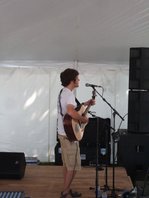 A number of my listeners have asked about the origin of my online title, The Bard of Cornwall. The name has caused some confusion over the years, with many people assuming that I come from Cornwall, England. So here is the definitive account. Back in my high school days, I was in the habit of choosing online handles like The Earl of Cornwall, The Duke of Cornwall, and The Bard of Cornwall. Obviously, these were tongue-in-cheek labels, though they did at least indicate my hometown of Cornwall, Ontario, Canada (not far from the US border or from our nation’s capital, Ottawa). When using a service like ICQ, MySpace, MSNmessenger, or later FaceBook and YouTube, I would change these names every once in a while for variety and security. So, that’s how it happened when in 2007 I created an account on YouTube, never intending for my music channel to be more than an experiment. But, as the channel gained momentum and viewers from around the world, I started to take it more seriously both as an artistic outlet and as a means to promote my in-person music performances. Eventually I decided to start using my real name on YouTube, in order to ‘stand behind’ the work more openly, and to make it easier to coordinate with prospective booking agents. Since I had chosen the name Bard of Cornwall ironically—there are actual Bards of Cornwall, in Cornwall, England—I tried to remove that name from my YouTube channel, but the name had stuck with many of my listeners, and I couldn’t change the URL name in either FaceBook or YouTube. So, rather than create an entirely new channel, I opted to leave the Bard of Cornwall name here and there, for instance in the tags on each video. I’m aware that a person can’t self-identify as his community’s bard, as that’s a position chosen communally, and the title is a matter of honour. Bards were important carriers of communal memories in the age before universal literacy, and they usually would have been full-time musicians. So, again, I chose the title ironically. Nevertheless, I think that there is some overlap in my mission to preserve traditional folk music and the role of traditional bards. And indeed the job is easier now—a 17th-century bard could play before a handful of nobles at a banquet, but ‘cyber bards’ can play before literally millions of people at once. And that’s the story of how Jesse Ferguson, a folkie from Canada, came to be known as The Bard of Cornwall on YouTube.
1 Comment
I tend to think of my YouTube channel as my most important musical work, not because I put most effort into the production of the videos (I put much more time into my studio recordings) but because the channel is free for anyone online, anywhere in the world. Most of my CD sales and bookings for live performances come from fans of my YouTube channel. I also feel that my channel, and others like it (for instance those by Raymond Crooke and KelticKev), is important because it makes recordings of traditional folk songs accessible for anyone with an Internet connection. My recorded CDs do that too, but far fewer people will buy the CD, so the YouTube channel remains more important.
Accordingly, I tend to celebrate the various milestones for my channel, which is now into its 8th year. Not too long ago my channel surpassed 3 million views from people around the world, but my most recent milestone is the posting of my 300th video. Technically, I’ve posted that number already, as my very first videos were taken down and re-recorded with better equipment, but this is the first time that 300 videos have been live on my channel. I was pondering the possibilities for that 300th video, and I put the question to my followers on Facebook. One listener (an old high school buddy, Mark) gave a neat suggestion—make an alternate arrangement of the first song I ever posted to YouTube. That video, as it turns out, was of the Irish song “The Leaving of Liverpool” performed on mandolin. The song is an upbeat one popular at pubs and festivals, but the lyrics are actually quite sad, involving a young sailor leaving his sweetheart to make a dangerous sea voyage to California. Sadly, the original file of the song that I uploaded in 2007 is gone forever, but my rerecorded version of the song’s traditional melody is available here. So, my task was to create an original arrangement for this classic folk song. Since the lyrics are bittersweet, I thought that changing the major key to a minor one would highlight that sad quality. I started tinkering with the chord arrangement, using a fingerpicking style instead of my usual vigorous strumming for this song. I’m quite pleased with the results, which one might argue suit the lyrics even better. I know that listeners are usually divided on these types of rearrangements—some love the new take on an old song, but many think it sacrilegious to tinker with classics in this way. Obviously, I have no issue with it, and can enjoy both traditional and rearranged versions of folk songs, though I do appreciate when new arrangements stay faithful to the sentiment of the lyrics. So, please have a listen, and let me know what you think. For those of you who’ve followed my channel so far, thanks for your support. I look forward to bringing you the next 300! 8. Improve Your Songwriting:
You’d probably like your songs to be remembered for more than 15 minutes. But, how to do that? Well, if we only learn and perform other songs in the current trends, then those are the musical structures, themes, etc. that we will internalize. If you only listen to the flavour of the week, then that’s likely what you’ll write. Traditional folk music, on the other hand, has stood the test of time. So, we can enrich our own songwriting by studying those examples that prove a song can be relevant for hundreds of years. Don’t stop following current trends and the great music of today, but traditional folk music can help you ground your original songs in those deep themes and concepts that go to the root of our humanity. Modern music, after all, evolved from traditional folk music. 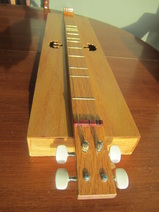 4. Recognisability: Not only might the songs be easier for you to learn because you’ve heard them before, but many of your listeners will likewise have heard the songs. It can really be tough to get audiences to engage with brand-new songs, as listeners in venues like bars/pubs tend to want songs they can sing along with, songs they already know. People are creatures of habit, but you can capitalize on that fact by incorporating some traditional songs into your set and/or album. You can lead your audience to see your new songs as part of a tradition that they already know and enjoy. 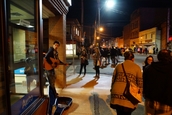 3. Easily Build Your Repertoire: The fact that traditional folk music is copyright clear could allow you to quickly and easily add songs to your next set list and/or CD. If you’re like me and writing original songs takes you a long time, then adding some traditional songs to your repertoire could be fun and useful, especially if your band hasn’t been writing together long enough to have a full roster of original songs. Moreover, you may already be somewhat familiar with the traditional songs from hearing them performed, which would make learning them quicker. 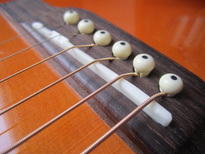 Copyright-Clear Material: These days when governments and the music industry are cracking down on copyright infringement, traditional folk music offers a safe haven. By definition it is in the public domain. It belongs to the public—to you and to me and to future generations. Do your research to ensure that a given song you want to perform/record is indeed old enough to be copyright-free (usually 75-100 years after publication, but check your country’s laws). If it is old enough, then you can record/perform that song without the hassle of seeking permission or paying for a mechanical and/or sync license. One warning: a song may be traditional though an artist holds copyright in a particular arrangement of the song, so, again, do your research. The effort is worth it, since covering contemporary songs without proper licenses (whether live or in recordings) can land you in legal trouble. (Disclaimer: this is not legal advice.) 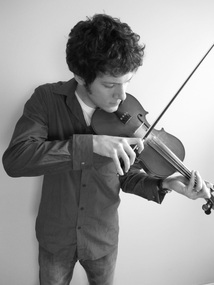 For many people, the term “folk music” conjures up only quaint images of geriatric fiddlers or country bumpkins square dancing at the town fair, but folk music can be rewarding in many ways for musicians of any age and from any region, whether rural or urban. Traditional folk music is the enormous body of tunes and songs that have been around long enough to enter the public domain, often of unknown authorship. These songs have stood the test of time, and many popular artists have incorporated them into their repertoires, from Johnny Cash and Dolly Parton, to Simon and Garfunkel, Neil Young and Bob Dylan, to Dropkick Murphys and Metallica. In fact, the 1960s saw a revival of folk music that pushed it into the mainstream, and that revival continues today, albeit less prominently. What follows are ten good reasons to consider learning some traditional folk music, reasons I learned over ten years as a performing singer-songwriter and as a recording artist, both for albums and for YouTube (www.youtube.com/bardofcornwall). My experience is mostly in folk music from the United Kingdom and North America, but these points also apply to many other traditions. Reason 1. Huge Variety: Those who would dismiss folk music as irrelevant to modern listeners generally haven’t experienced even a fraction of the traditional songs that we know of. There are so many to choose from, and so many moods created by them, that there would be some song to suit any musical taste. When it comes to traditional folk music, modern musicians are really spoiled for choice: you could listen for a lifetime and still discover new gems, from comic songs to love ballads to laments for the dead. |
Jesse's BlogThoughts on music and performing by Canadian singer-songwriter Jesse Ferguson. Categories
All
|
 RSS Feed
RSS Feed
